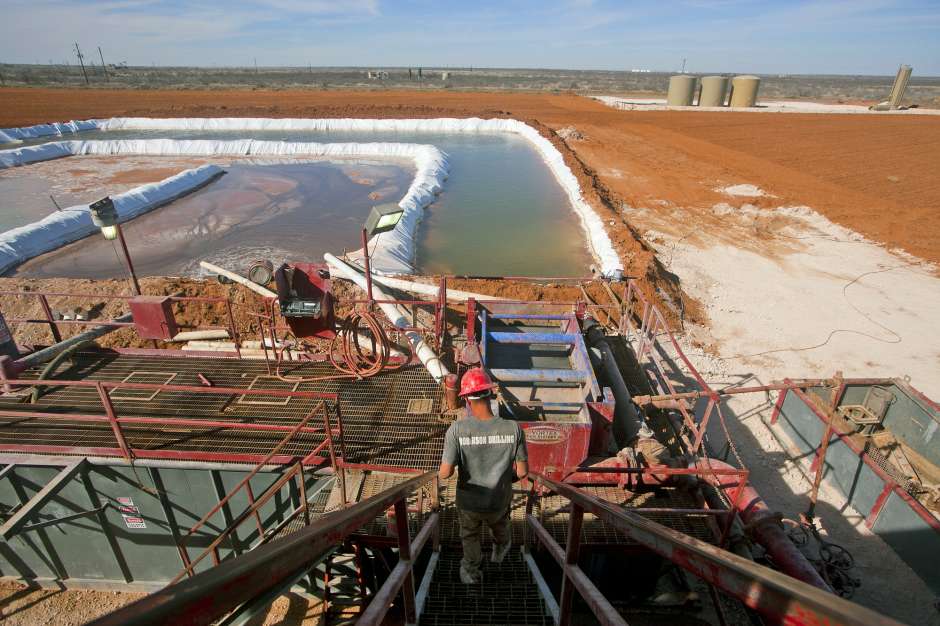 Sergio Chapa | Houston Chronicle
Sergio Chapa | Houston Chronicle
Oil field wastewater is more often being used for drilling and fracking operations in places such as Texas’ Permian Basin, experts say, helping to preserve freshwater and to solve one of the industry’s persistent problems.
Millions of gallons of water are needed to bring into production a single well for horizontal drilling and hydraulic fracturing. The amount of wastewater brought back up from a well during its lifetime can be several times as much.
Oil companies are finding, however, that wastewater used instead of purchased freshwater or brackish groundwater not only preserves a natural resource but can also improve production.
“Some companies say they get better results with reused water,” said Josh Adler, CEO of the Houston oil field water tracking company Sourcewater. “It’s the same water from the formation. You’re basically taking something out of the ground and putting it right back where it came from.”
The Permian Basin, once a prehistoric sea, holds trillions of gallons of hypersaline water underground with oil and natural gas reserves. In the western end of the shale play, known as the Delaware Basin, as many as five to 10 barrels of saltwater come out of the ground for every barrel of crude oil produced.
In a pair of studies released this month, scientists with the University of Texas at Austin Jackson School of Geosciences and three other universities studied how much wastewater eight major U.S. shale basins produced and then analyzed options for recycling and reusing that water.
Researchers determined that oil and natural gas wells from those eight shale basins produced more than 160 billion gallons of wastewater in 2017 — enough to fill more than 242,000 Olympic-size swimming pools.
Fracking operations in the lifetime of the Permian Basin will require 2.85 trillion gallons of water, researchers said, but will produce an estimated 10.4 trillion gallons of wastewater.
That wastewater contains hydrocarbons, chemicals, salts and sometimes even radioactive contaminants, making it too expensive to clean for agriculture or municipal purposes.
Most oil field wastewater is injected deep underground at sites known as saltwater disposal wells. Researchers determined that reusing that water for hydraulic fracturing is the most cost-effective and sustainable option for the industry.
“Recycled water will almost entirely replace the use of groundwater soon,” Adler said. “How soon? Within five years. That’s about the amount of time it will take for everybody to get used to the practice.”
But even if all hydraulic fracturing operations switch to reused water, the industry will still need saltwater disposal sites because of the sheer volume of wastewater produced in places such as the Permian Basin.
Herb Chambers, CEO of the Houston oil field water pipeline company EVX Midstream, said the recent wastewater studies have come out at a time when his company’s customers are asking for more water recycling services. Chambers said one of his company’s customers recently signed a deal that will expand its water recycling and reuse across the entire basin.
“Our basinwide gathering system functions as a reuse and recycling distribution network for all of our producer customers,” Chambers said. “We’re committed to helping producers develop energy in the most sustainable way. We’re excited at our customers’ response to embrace reuse and recycling.”
Contact:
Dane Moorefield, VP of Marketing
P: +1 (713) 909-4664
E: [email protected]